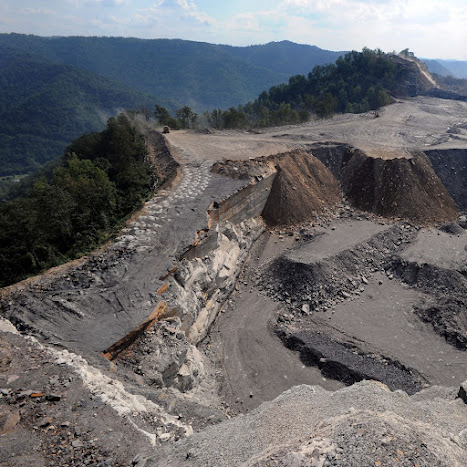Coal mining had a profound impact on civilization. Their waterlogged remnants might now be used to heat future dwellings.

The quantity of coal in Britain, as well as the simplicity with which it could be obtained, was a critical component in this historical turning point, powering the steam engines that aided in the change of civilization.
However, times have changed. The number of active coal mines in the country has plummeted, and in June, the government declared that Britain will stop using coal to produce power in October 2024, a year ahead of schedule from the initial aim of 2025.
Even though the majority of mines in the United Kingdom have closed, their centuries-old saga is far from ended. In Scotland, researchers are investigating ways to exploit the water that has flooded ancient, abandoned mines to offer decarbonized heating for houses.
The Glasgow Geoenergy Observatory, which is managed by the British Geological Survey, is doing this research. There have been a dozen boreholes dug, the most of which are in Rutherglen, a town southeast of Glasgow.
According to those in charge of the project, Glasgow and Rutherglen had some of Scotland's busiest coal mines. Natural floods flooded them with water that was around 12 degrees Celsius after they were closed.
According to Mike Stephenson, who was the British Geological Survey's executive top scientist for decarbonization until recently, the initiative is about "doing study on the heat in coal mines and, to some extent, if you can store heat in ancient coal mines."
The team was "experimenting with... how rapidly water moves between these mines, how warm the water is, how... fast, if you take warm water out, does the water refill — so how fast does the warmth come back," according to Stephenson.
He explained, "It's a study facility, not a demonstration." "To try and understand what are the limitations to the quantity of heat, how much heat there is," researchers said.
He went on to say, "All of those things will be a set of scientific discoveries, equations, and models." He said that this would offer useful information to corporations and local governments interested in the concept.
"It will assist them in determining where to drill the holes, how close they should be drilled together, how deep they should be drilled, and how to construct them to be as efficient as possible."
Over the last year or so, the project has progressed. Pumping tests and samples from ten of the site's boreholes were completed in the summer of 2021, according to the announcement.
At the time, Alan MacDonald, a hydrogeologist of the British Geological Survey, remarked, "The newest data reveal that the boreholes of the Glasgow Observatory are well-connected to the flooded mine workings."
He claimed that mine water between 50 and 90 meters under Glasgow is between 11 and 13 degrees Celsius. According to MacDonald, the average temperature of Scottish groundwater is 10 degrees.
Possibilities
According to the Coal Government of the United Kingdom, coalfields are home to 25% of the country's residential homes. Underground, flooded mines, such as the ones being investigated in Glasgow, look to have a lot of promise as a source of heat.
The Coal Authority claims that the "constantly replenishing water within these mines might possibly be a significant enough resource to meet all of the heating requirements for the coalfield districts," based on its own estimates. It might also be used in industries like manufacturing and horticulture.
"The water in these mines is a low-carbon, long-term heat source that, under the appropriate circumstances, can compete with public-supply gas costs and yield carbon savings of up to 75% compared to gas heating," it says.
Many governments are striving to shift away from coal, yet it remains an important source of energy in many countries. Coal accounts for over a third of global energy generation, according to the International Energy Agency.
Coal-fired electricity output is expected to reach an all-time high in 2021, according to the Paris-based group.
While coal was critical to the world's industrialisation and continues to be an essential source of power, it has a significant environmental impact.
The US Energy Information Administration covers a variety of coal-related emissions. Carbon dioxide, sulfur dioxide, particulates, and nitrogen oxides are among them.
Greenpeace has called coal "the worst, most polluting form of creating electricity" in the past.
South Tyneside Council in the northeast of England has been working on a scheme to reuse some of the area's mining legacy.
The £7.7 million ($10.4 million) Hebburn Minewater Project, according to the council, will "extract geothermal energy from abandoned flooded mines of the former Hebburn Colliery."
The program intends to use mine water from the ancient colliery, which opened in the late 1800s and closed in 1932, to provide heat to many council-owned buildings.
The digging of two boreholes is the focal point of the project. The heat from the mine water will be extracted via a water source heat pump, then compressed to a much higher temperature. After being routed to an energy center, the water will be distributed through a new network of pipes.
The council is collaborating with Durham University and the Coal Authority on the project, which is expected to be completed in June 2023. Last October, research revealed that the temperature of the mine water was higher than previously assumed.

Post a Comment